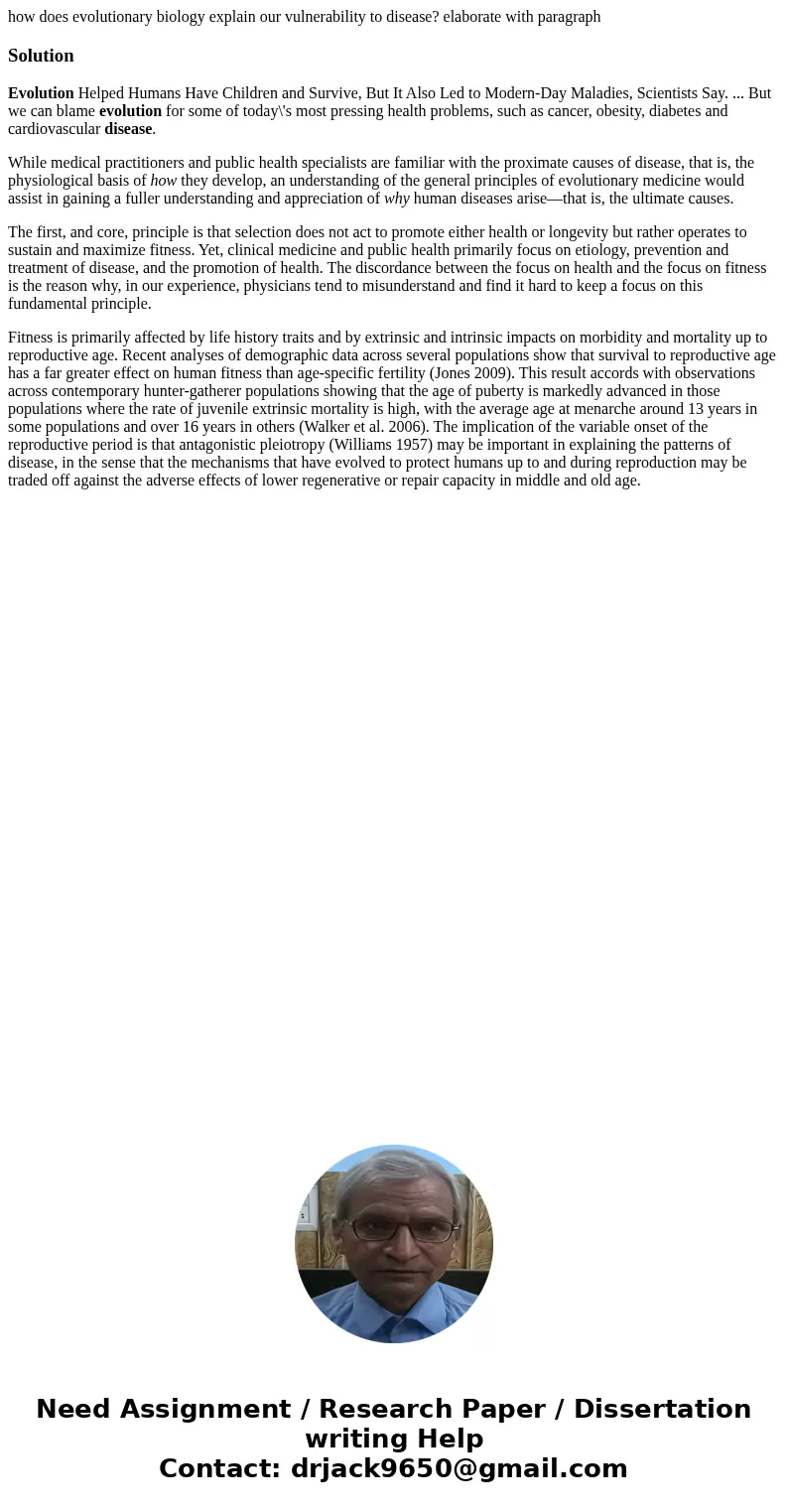how does evolutionary biology explain our vulnerability to d
how does evolutionary biology explain our vulnerability to disease? elaborate with paragraph
Solution
Evolution Helped Humans Have Children and Survive, But It Also Led to Modern-Day Maladies, Scientists Say. ... But we can blame evolution for some of today\'s most pressing health problems, such as cancer, obesity, diabetes and cardiovascular disease.
While medical practitioners and public health specialists are familiar with the proximate causes of disease, that is, the physiological basis of how they develop, an understanding of the general principles of evolutionary medicine would assist in gaining a fuller understanding and appreciation of why human diseases arise—that is, the ultimate causes.
The first, and core, principle is that selection does not act to promote either health or longevity but rather operates to sustain and maximize fitness. Yet, clinical medicine and public health primarily focus on etiology, prevention and treatment of disease, and the promotion of health. The discordance between the focus on health and the focus on fitness is the reason why, in our experience, physicians tend to misunderstand and find it hard to keep a focus on this fundamental principle.
Fitness is primarily affected by life history traits and by extrinsic and intrinsic impacts on morbidity and mortality up to reproductive age. Recent analyses of demographic data across several populations show that survival to reproductive age has a far greater effect on human fitness than age-specific fertility (Jones 2009). This result accords with observations across contemporary hunter-gatherer populations showing that the age of puberty is markedly advanced in those populations where the rate of juvenile extrinsic mortality is high, with the average age at menarche around 13 years in some populations and over 16 years in others (Walker et al. 2006). The implication of the variable onset of the reproductive period is that antagonistic pleiotropy (Williams 1957) may be important in explaining the patterns of disease, in the sense that the mechanisms that have evolved to protect humans up to and during reproduction may be traded off against the adverse effects of lower regenerative or repair capacity in middle and old age.

 Homework Sourse
Homework Sourse